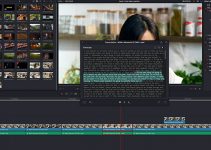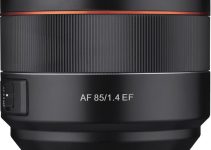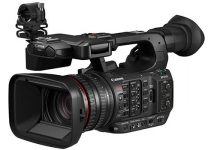If you haven’t heard, Apple has recently refreshed the standard 27” iMac with 5K Retina Display. It still has the same look as it has had for years – which isn’t a problem considering the design holds up – but it comes with much more powerful components. The base model even comes with a 6-core processor as standard!
Is this going to be a good option for video editing? It’s certainly more powerful, but is it powerful enough? Max Yuryev picked up two of them to figure out exactly how it will perform and what configuration others may need to do their own video editing. With the massive influx of raw-shooting cameras and greater than 4K resolutions as well as slow-motion capabilities and new codecs, I’m sure many filmmakers are looking to upgrade their computer.
So what is brand new? Well, even though it looks the same, the screen can actually now be upgraded to a Nano-texture (aka matte) finish. This is the same as found on the Pro Display XDR and can help minimize glare and reflections.
Smaller upgrades include a 1080p webcam, better microphones and speakers, and SSDs are now the default option for storage. For photographers and filmmakers specifically you will see a change to the SD slot to UHS-II speeds. All of this is nice, if small.
The rear still has the same configuration with two Thunderbolt 3 ports and 4 UHS Type-C ports. Now it’ll run up to two 6K displays, such as the Pro Display XDR. You can also upgrade the Ethernet port to 10Gb, which is handy for advanced networks. All these changes add up to something even closer to the iMac Pro.
For memory, you can configure it with up to 128GB, though the recommended path is to use the convenient rear slots to upgrade it yourself for way cheaper than Apple. The T2 Security Chip finally makes it way into the iMac here as well, which helps with decoding/encoding HEVC/H.265 footage.
Yuryev is focused in on an upgraded model that comes in at $2299 as this model gives a nice boost to performance compared to the baseline by upgrading the processor and graphics to an 8-core chip and double the graphics memory with the 5500 XT.
These newer components offer a ton of hardware-based improvements over older models, helping to dramatically speed up performance for video editors.
To put things in perspective, the older 580X generally could handle up to 4K at 30 fps while these new 5000 XT series can do 4K and up to 90 fps. That’s huge. That means you can get up to three times faster exports and it’s all due to the use of new Navi RDNA architecture.
If you do a lot of effects or color grading you may want to consider upgrading to the 5700 XT with double the raw performance and double the memory. The iMac ends up in a weird, yet very good, spot cause of these potential upgrades. The components are somehow cheaper than on the Mac Pro, yet seem to offer similar performance.
Another interesting performance mark is that the 8-core processor in the 2020 iMac is more powerful than the 8-core or even 10-core options of the iMac Pro. That isn’t the whole picture though, as real-world use that takes heat and other limitations into consideration may show differences in performance.
What Yuryev really wants to test is to see how it handles compressed C-Log 8K video from the Canon EOS R5. Interestingly, a lot of the struggle is the choice to use 4:2:2 color sub sampling which lacks hardware decoding support. This is the first workstation-class Mac to offer these options, meaning it might actually be better at editing this type of footage than something like a baseline Mac Pro.
As for the recommended configurations, Yuryev has no problem recommending the base model for those on a budget. It’ll perform very well, though be aware of potential limitations if you start doing a lot of effects or want to edit heavily compressed >4K resolution footage. Just make sure to upgrade your RAM to at least 32GB with a third-party kit. It’s easy to do.
More advanced video editors should go with the $2300 recommended above. This comes with the 8-core processor and better graphics. You might want to think about bumping the SSD up to 1TB and/or the 10Gb Ethernet depending on your personal needs on storage and how you work. For RAM, again, upgrade it yourself with 64GB. If you think you might upgrade later to 128GB, pick up two sticks of 32GB each. Realistically most people won’t need more than 64GB.
Graphics is a complicated question. For standard editing with minimal effects the 5500 XT is likely fine. If you think you might start pushing it with motion graphics just go for the 5700 XT with 16GB GDDR6 memory as the performance is much better and will help future-proof your system.
As for CPUs, the 8-core will work very well. The 10-core is obviously better, but we haven’t figured out what the thermal limitations are quite yet, so while there is about a 17% improvement to performance, you may not actually see all that for the extra money.
The new 2020 27” iMacs may be the best bang for buck in Apple’s lineup for video editing, which is saying something.
[source: Max Yuryev]
Order Links:
- Apple 27” iMac with Retina 5K Display (2020) (B&H, Amazon)
- 32GB RAM Upgrade (2 x 16GB) (B&H, Amazon)
Disclaimer: As an Amazon Associate partner and participant in B&H and Adorama Affiliate programmes, we earn a small comission from each purchase made through the affiliate links listed above at no additional cost to you.




